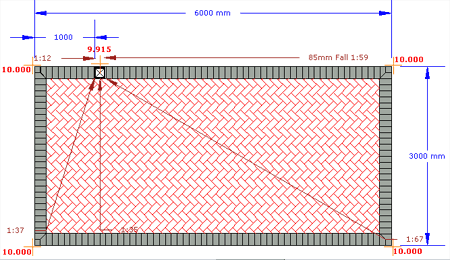We are hoping to lay a block paved driveway to replace the existing degrading tarmac one. The drive is approx. 20 feet wide by 10 feet. At the moment when it rains we have a large puddle forming in the middle of the drive just in front of the front door, this drains [slowly] away through holes drilled through the tarmac and underlying concrete.
If we raise the level of the drive to slope away from the house towards the road, the level will be above the existing damp course. Even I know that is a no no!!
Yes we need some drainage, but what and how? Can anyone help.
PS The new block paving will extend round the side of the house leading into the back garden.
Drive Drainage
-
84-1093879891
A gully or linear drain is the simple answer, but do you have anywhere to connect? Is there an existing drainage system in the immediate vicinity? If not, then it'll have to be a soakaway, which is best built outside the driveway and at least 5 metres (preferably 10m) from any building.
Give me more of a description and I'll be able to suggest summat. :)
Give me more of a description and I'll be able to suggest summat. :)
-
84-1093879891
-
84-1093879891
You can put the gully wherever you like and then rely on the connecting pipework to link it to the existing drainage system, but, if the pipework is less than 900mm deep, it's best to lay on and haunch with concrete, especially if you use the 110mm uPVC stuff.
Just make sure you have adequate fall to the gully - 25mm per metre will be ideal, but you can actually get away with 15mm per metre, if you're struggling.
Just make sure you have adequate fall to the gully - 25mm per metre will be ideal, but you can actually get away with 15mm per metre, if you're struggling.
-
84-1093879891
Instead of laying your pipework on peagravel or another loose bedding material, they should be laid on a bed of concrete and then have concrete placed all around them, sides and top, so that the pipes are completely encased, with flexible joints at the couplings.
There's an illustration on the Laying Drainage page that shows the basic idea.
The concrete prevents the pipework being crushed by the vehicles using the driveway.
There's an illustration on the Laying Drainage page that shows the basic idea.
The concrete prevents the pipework being crushed by the vehicles using the driveway.
